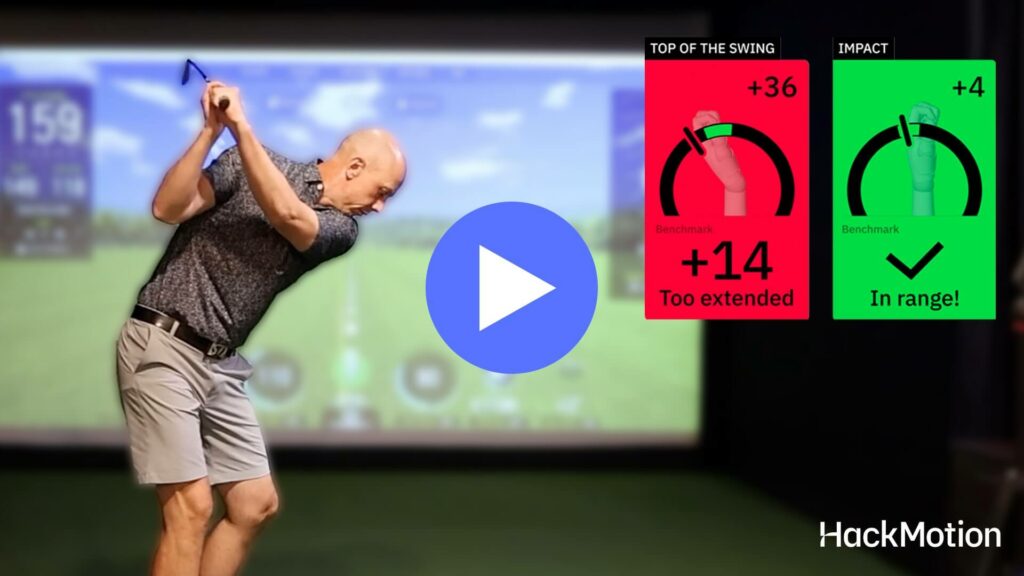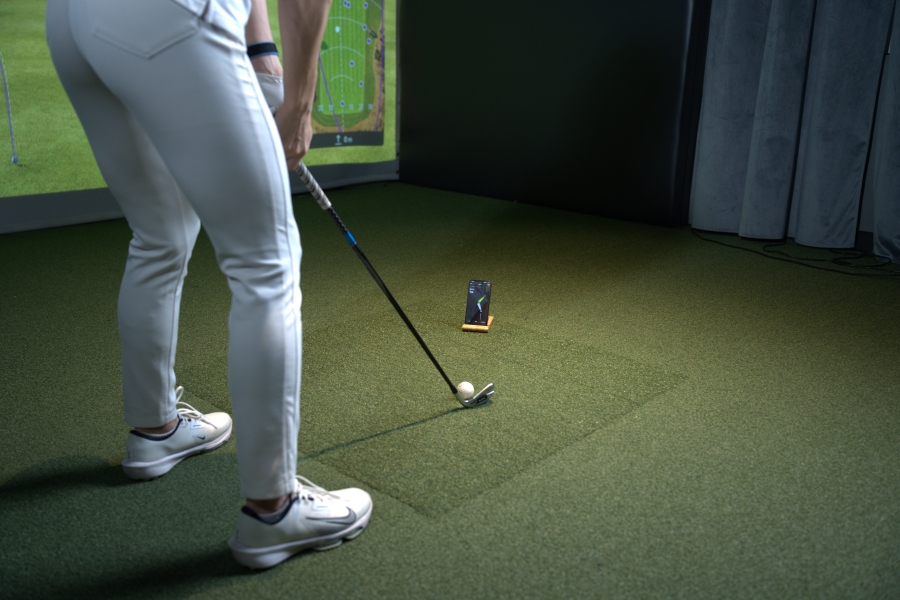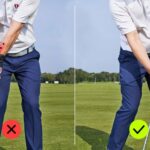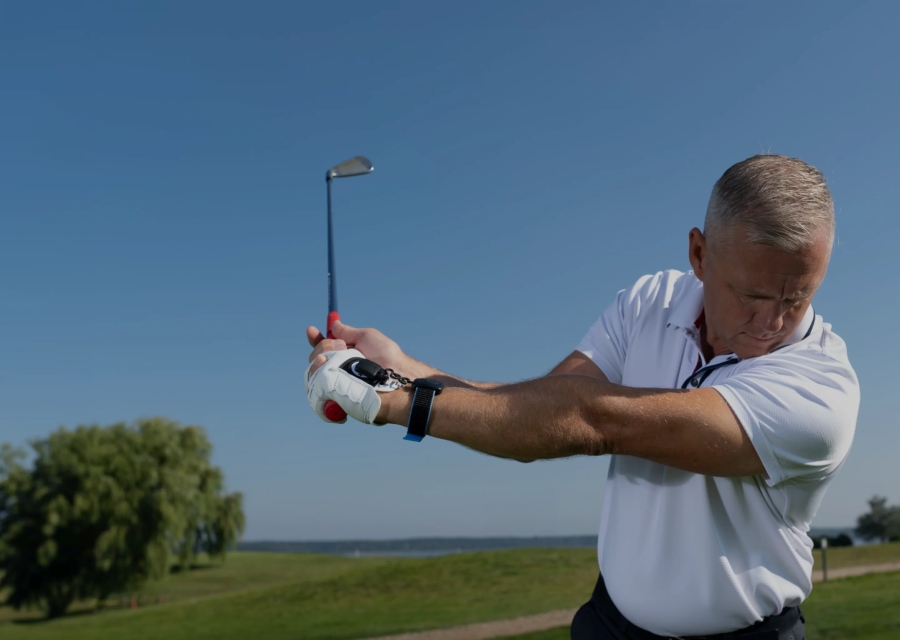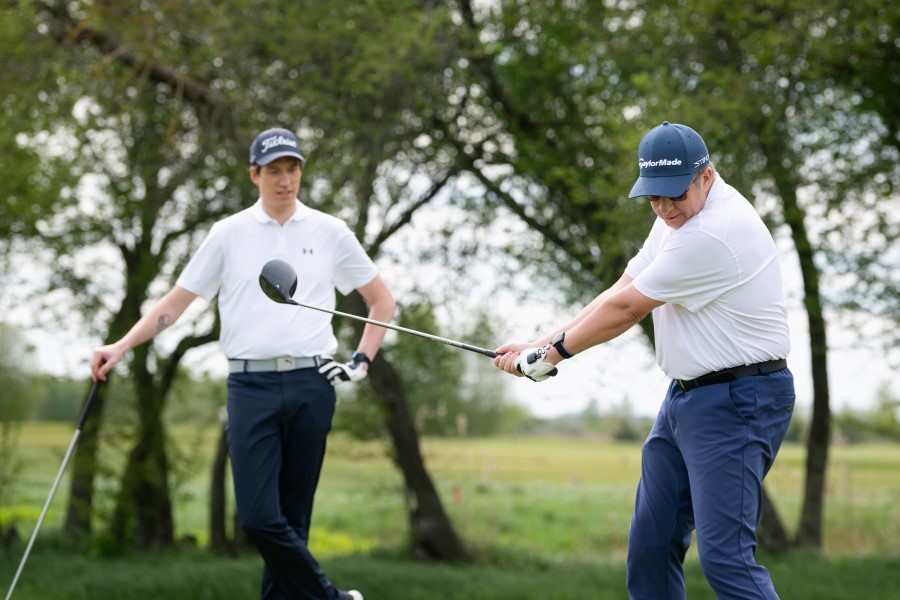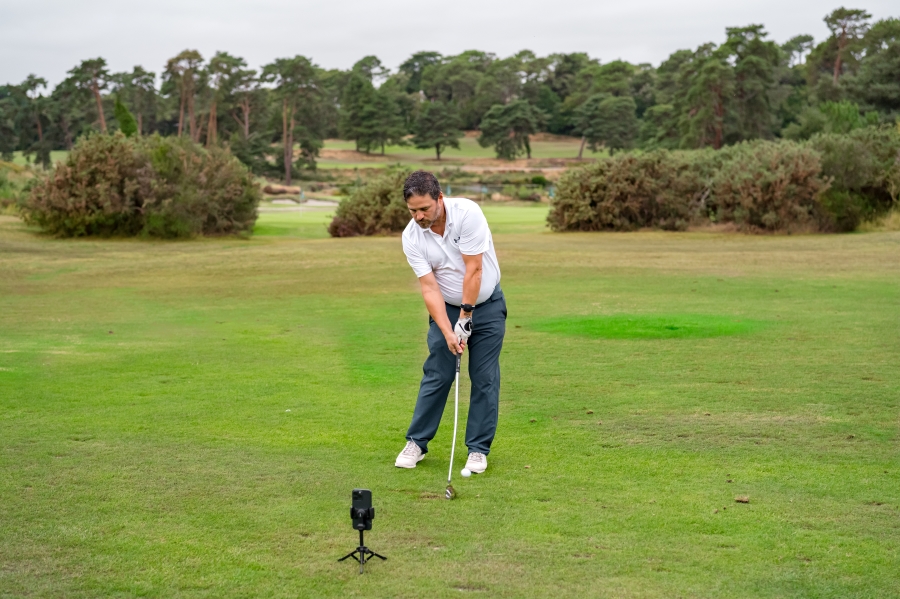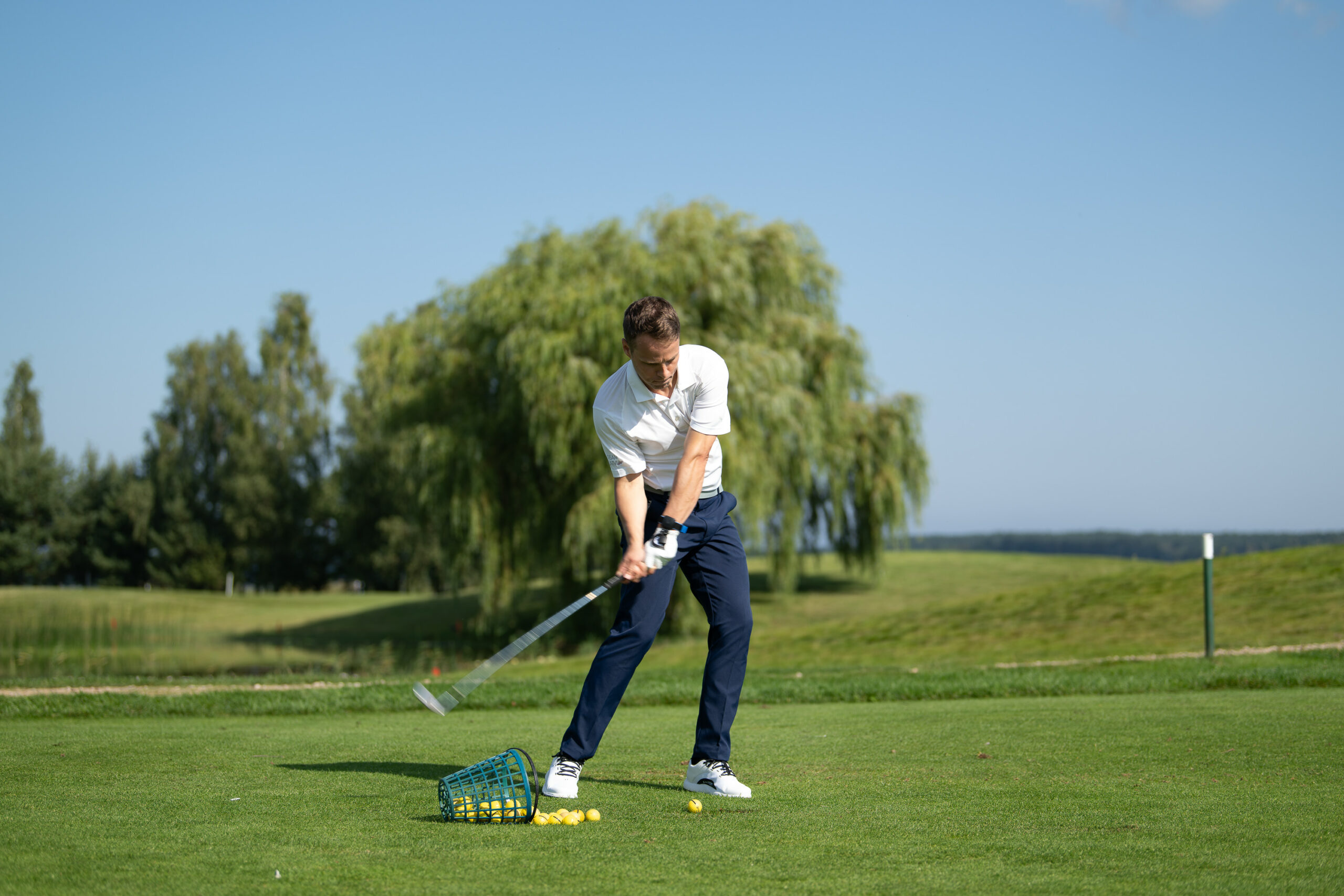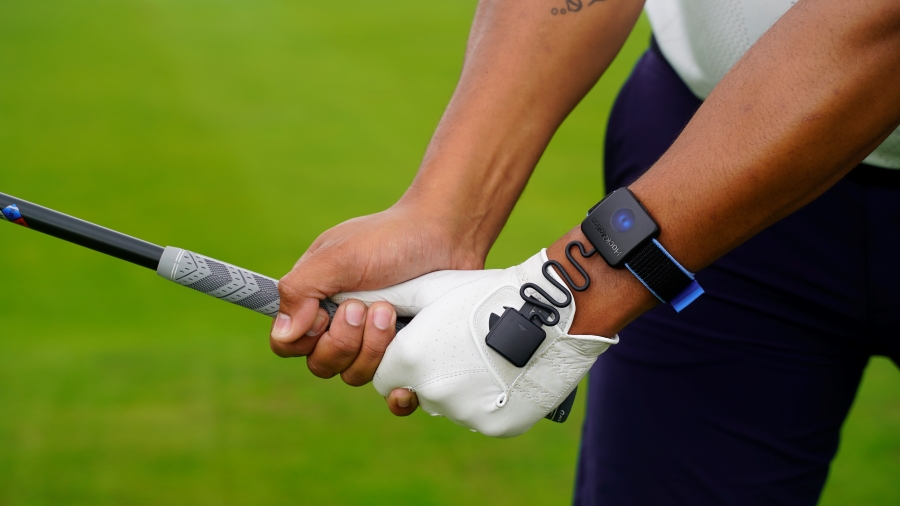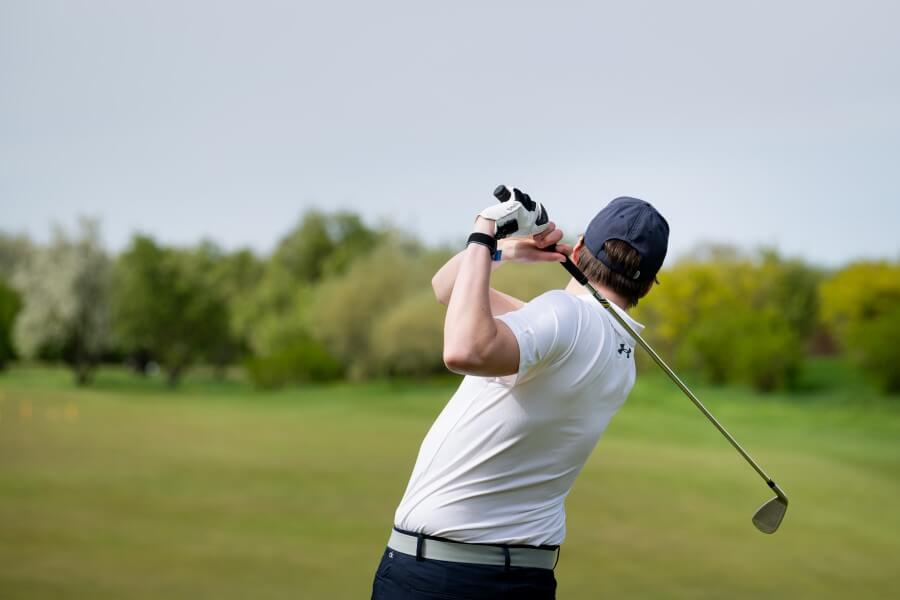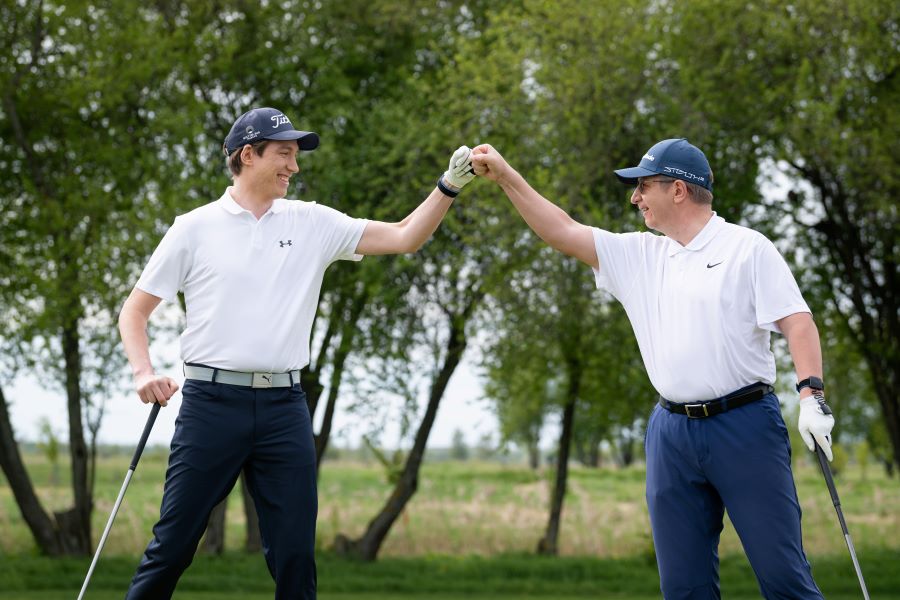Ground Reaction Force in Golf Explained + Practical Tips to Use the Ground
In sports, athletes use the ground to generate power. We see it when a basketball player jumps into a shot or a pitcher drives off the mound to throw a fastball.
In golf, however, many players overlook the ground as a tool for speed, stability, and control.
Too often, the only time amateurs think about the ground is when they accidentally dig too deep and hit a fat shot. But the ground can (and should) be one of your greatest sources of energy in the golf swing.
If you’re ready to learn how to use the ground properly and how your wrists tie into the process, you’ll find everything you need to know here.
Ground Forces in the Golf Swing (Key Takeaways)
Here are the most important things to know about ground reaction forces. Take some time to go through our entire guide but here are the key points you’ll need.
- Ground reaction forces exist in every golf swing, but few players know how to maximize them.
- These forces happen in three planes: rotational, lateral, and vertical.
- The golf swing has three functions — contact, distance, and direction — and ground forces affect all three.
- Simply having the intention to swing faster changes how you use the ground.
- The lead leg acts as a springboard for power, driving the down-and-up motion through impact.
- A quicker backswing often leads to more speed, but timing and centered contact remain the priority.
- HackMotion helps measure tempo, wrist angles, and clubface control as you add speed to your swing.
Prefer to watch instead of read? Check out the video below to see how ground reaction forces work—and how to use the ground properly in your golf swing.
Contents
What are Ground Reaction Forces?
Every time you swing, you’re pushing against the ground and the ground pushes back. These are called ground reaction forces.
They exist in three directions:
- Rotational – twisting into the ground as your body turns.
- Lateral – shifting weight side-to-side, especially into the lead foot during transition.
- Vertical – pushing down and then “springing” up through impact (the most discussed in modern instruction).
While it may feel like ground forces are a hot topic in golf they aren’t a new discovery. They’ve always been part of the swing.
What’s new is our ability to measure and train them. HackMotion allows you to see how these forces affect your wrist angles, helping you understand whether the energy you create with your body is actually making it to the clubface.
The Three Functions of Every Golf Swing
When golfers chase speed, they often forget that the swing has three equal priorities:
- Contact – striking the center of the face.
- Distance – transferring energy efficiently into the ball.
- Direction – keeping the ball under control.
Ground forces influence all three. If you only focus on jumping up for distance, you risk poor contact and a wide shot dispersion.
That’s why syncing lower-body movement with wrist control is essential. With HackMotion, you can train your wrists to stay stable as your body pushes harder into the ground.
How to Use the Ground in Your Swing
Learning to use the ground isn’t about bouncing up and down or forcing movement it’s about sequencing.
The best players use the ground to build rhythm: lighter going back, lower in transition, and then driving up through the strike.
Each of the moves below gives you a feel for how to sync your lower body with your wrists so that the extra force you generate actually makes it into the ball.
1. Feel Light in the Backswing
Many tour players feel as if they get taller during the backswing as though their feet are lighter. This creates room to press back into the ground during transition. Try standing a touch taller going back, then settling into your lead leg as you change direction.
Wrist connection: As you squat into transition, check with HackMotion that your lead wrist is stable (slightly flexed), ensuring that added lower-body force translates into a square face. The extra force is important but if you lose wrist angle it will change your clubface position.
2. Push Down, Then Push Up (Lead Leg as the Catalyst)
The classic sequence is: up in the backswing, down in transition, up again at impact. Your lead leg is the springboard for this move. It absorbs the squat, then pushes you back up into the strike.
Timing is everything with this movement.
If you wait too long to push up you’ll miss the strike. Using HackMotion, you can measure whether your wrist angles are stable as you add this speed. If they flip or extend too early, power won’t transfer cleanly into the ball.
3. Use a Faster Backswing to Unlock Speed
Interestingly, one of the simplest ways to increase ground force is to speed up your backswing.
When the club moves back faster, your body reacts by using the ground more aggressively on the downswing.
With this move it’s important to measure in addition to “feel”. The HackMotion app tracks backswing and downswing timing ratios. If your backswing time gets shorter, overall club speed increases.
4. Expect Some Loss of Control at First
When you first train ground forces, you’ll likely hit some poor shots. You may lose sequencing, top the ball, or miss the center of the face. That’s normal.
Think of it as part of the process, you’re teaching your body a new way to move. With feedback from HackMotion, you can refine timing and wrist stability until the new speed becomes usable on the course.
HackMotion Drill: Transition Drill
To work on ground forces you’ll really need to work through the steps listed above. This would be considered more of an advanced move to add to your game.
However, the Dynamic Transition Drill in the HackMotion app can help you with your sequencing and ensuring that all of these pieces happen in the order they should. This drill teaches is located in the HackMotion app drills center:
Transition Drill in HackMotion
Master your sequencing and pivot to improve your swing efficiency and control.
HackMotion Transition Drill – Step by Step
- Take your setup wearing HackMotion.
- Make a backswing while feeling taller or lighter on your feet.
- As you transition, squat slightly into your lead leg.
- Push up and rotate through, checking HackMotion feedback to confirm your lead wrist stays flexed through impact.
- Repeat slowly at first, then add speed once you can keep the face square.
Final Thoughts
The ground isn’t just something you stand on during your swing it’s a built-in power source.
By learning to move up, down, and back up again with proper timing, you can unlock more speed and stability. Just remember, power without control doesn’t help your score.
That’s where your wrists come in. Using HackMotion, you can train to keep the clubface square while experimenting with ground forces, ensuring the extra energy gets transferred into better ball striking. These concepts apply to every club in the bag from irons to your driver.
If the feels aren’t sticking, a golf training coach using HackMotion can help you learn to use the ground properly.

